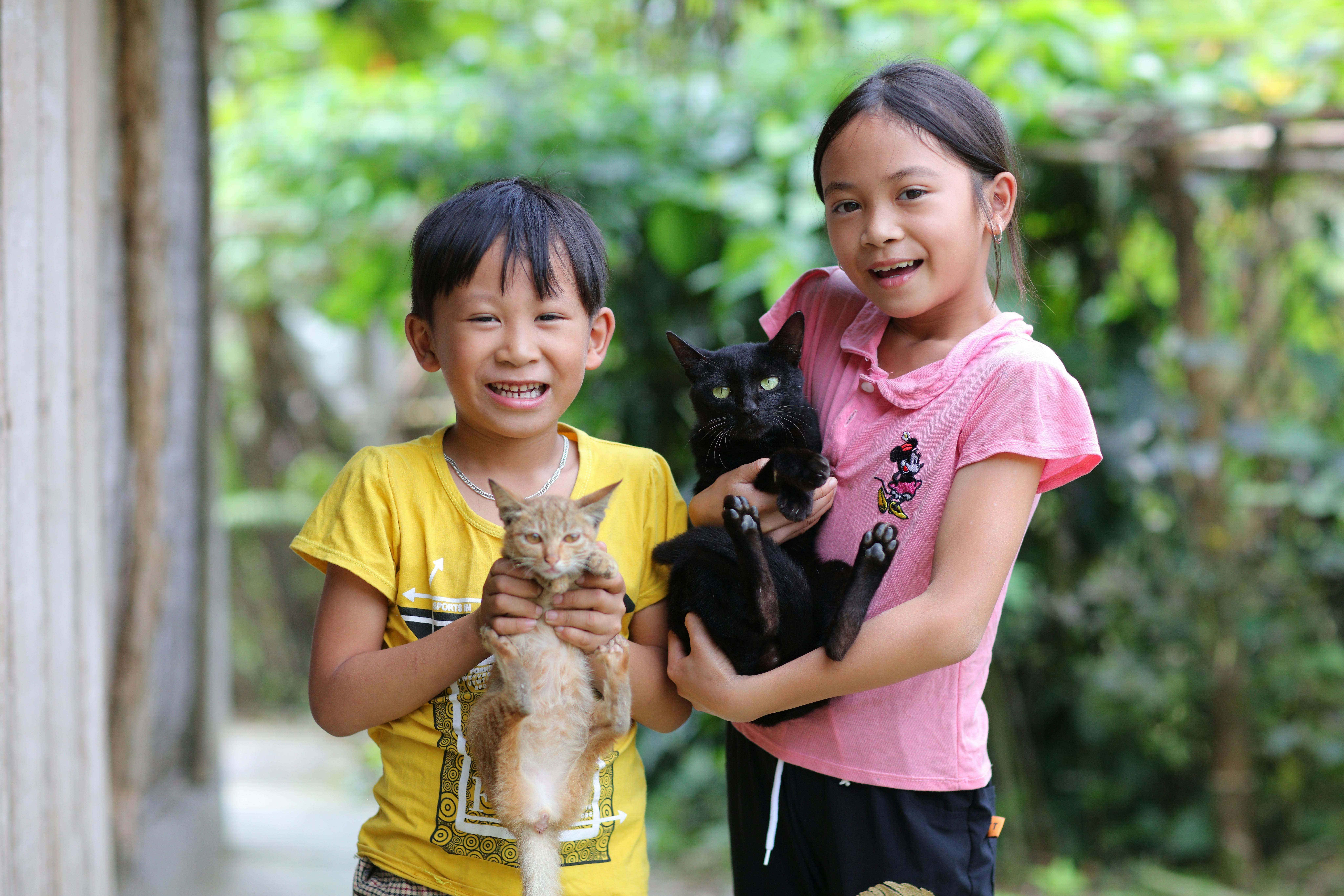 |
| Image credit: Pexels |
In the realm of family dynamics, the bond between cats and children holds a unique and often profound significance. While some may view cats merely as pets and children as human companions, the relationship between these two entities is far more intricate and symbiotic than meets the eye. In this comprehensive guide, we delve into the multifaceted dynamics of the interaction between cats and children, exploring the benefits, challenges, and best practices for fostering a harmonious coexistence.
The Benefits of Cats for Children
1. Companionship and Emotional Support
Cats have long been recognized for their ability to provide companionship and emotional support to individuals of all ages, including children. Studies have shown that interactions with cats can reduce stress, anxiety, and loneliness, offering children a source of comfort and solace in times of need. Moreover, the presence of a cat in the household can promote empathy, responsibility, and nurturing behaviors in children, as they learn to care for and interact with their feline companions.
2. Development of Social Skills
Interacting with cats can also facilitate the development of social skills in children. Through playing, grooming, and communicating with their feline friends, children learn valuable lessons in empathy, communication, and cooperation. Additionally, caring for a cat instills a sense of responsibility and routine, as children become accustomed to feeding, grooming, and attending to the needs of their pet on a daily basis.
3. Educational Opportunities
Cats offer numerous educational opportunities for children, fostering curiosity, creativity, and a deeper understanding of the natural world. From observing their behavior and communication cues to learning about their dietary needs and habitat preferences, children can gain valuable insights into animal behavior and biology through their interactions with cats. Moreover, caring for a cat can spark an interest in veterinary science, animal welfare, and conservation efforts, inspiring children to pursue careers in related fields in the future.
The Benefits of Children for Cats
1. Enriched Environment
Children can provide cats with mental stimulation and enrichment through play, interaction, and exploration. The presence of a child in the household introduces new sights, sounds, and experiences for the cat, preventing boredom and promoting mental and physical well-being. Additionally, children often engage in active play with cats, encouraging exercise, agility, and socialization, which are essential for maintaining a healthy and happy feline.
2. Emotional Bonding
Contrary to popular belief, many cats form deep and meaningful bonds with the children in their household. Cats are highly perceptive animals that are capable of forming emotional connections with their human counterparts, including children. Through gentle interactions, affectionate gestures, and shared experiences, cats and children can develop a strong and lasting bond based on trust, mutual respect, and companionship.
3. Sense of Security
For some cats, the presence of children in the household can provide a sense of security and comfort. Children often exude warmth, affection, and positive energy, which can help alleviate anxiety and fear in cats, especially those that have experienced trauma or abuse in the past. Additionally, the playful and nurturing nature of children can create a safe and welcoming environment for cats, allowing them to relax, unwind, and feel at ease in their home environment.
Best Practices for Fostering a Harmonious Relationship
1. Supervision and Boundaries
When introducing cats and children, it is essential to provide supervision and establish clear boundaries to ensure the safety and well-being of both parties. Teach children how to approach and interact with cats gently and respectfully, avoiding rough handling, tail-pulling, or sudden movements that may frighten or startle the cat. Similarly, educate cats on appropriate behavior around children, such as refraining from scratching or biting during play.
2. Positive Reinforcement and Rewards
Encourage positive interactions between cats and children through positive reinforcement and reward-based training. Praise both the cat and the child for engaging in calm, gentle, and cooperative behaviors, such as petting, grooming, or playing together. Offer treats, toys, or affectionate gestures as rewards for desired behaviors, reinforcing the bond between cats and children and fostering a sense of mutual trust and affection.
3. Creating Safe Spaces
Provide cats with safe spaces and retreat areas where they can escape and relax away from the hustle and bustle of family life. Designate quiet, secluded areas in the home where cats can retreat when they need privacy or solitude, such as a cozy cat bed, perch, or hiding spot. Likewise, teach children to respect the cat's personal space and boundaries, allowing them to retreat when they feel overwhelmed or overstimulated.
Conclusion: Nurturing a Lifelong Friendship
In conclusion, the relationship between cats and children is one of profound mutual benefit and companionship, enriching the lives of both parties in countless ways. By understanding the unique dynamics of this relationship and implementing best practices for fostering a harmonious coexistence, families can nurture a lifelong friendship between their feline and human members, creating a home environment filled with love, laughter, and cherished memories.
@nolacrazycatlady #lifewithcats #catmom #catlady #craZycatlady #nola #elvis #mainecoon ♬ Take My Breath Away - EZI



.jpg)







0 Comments